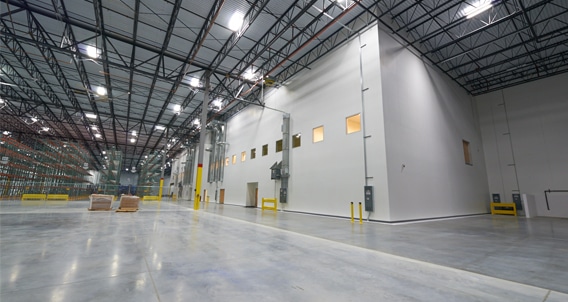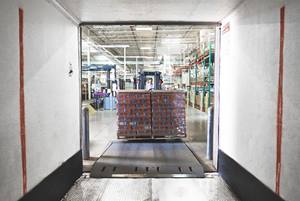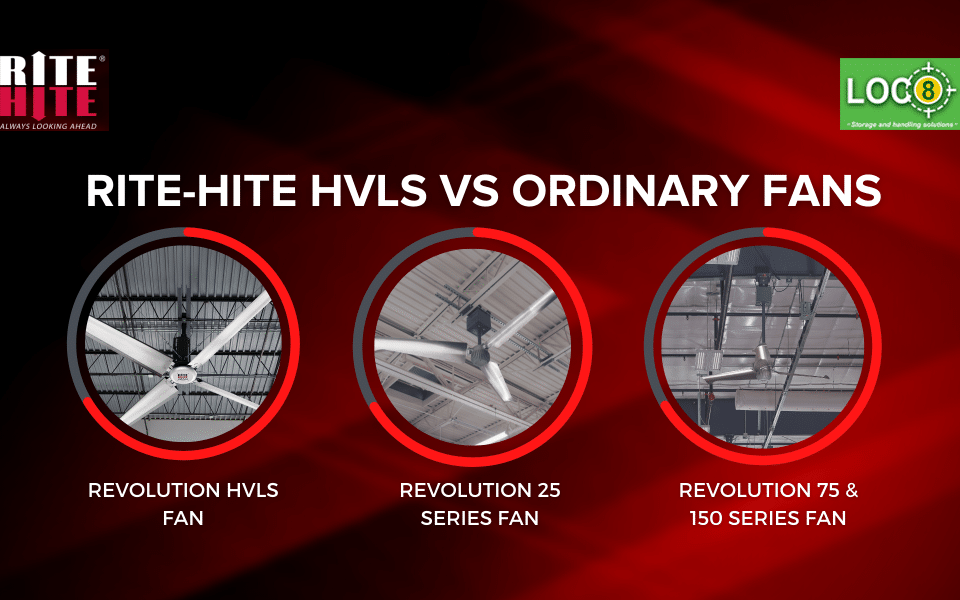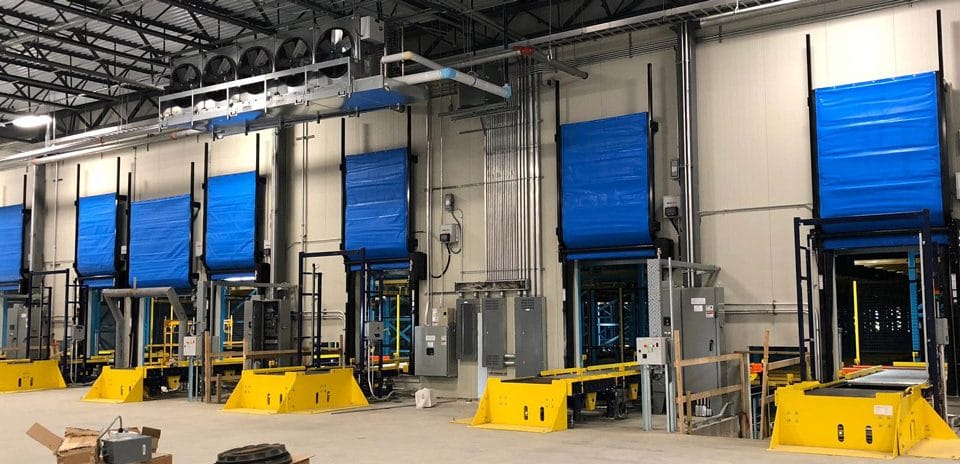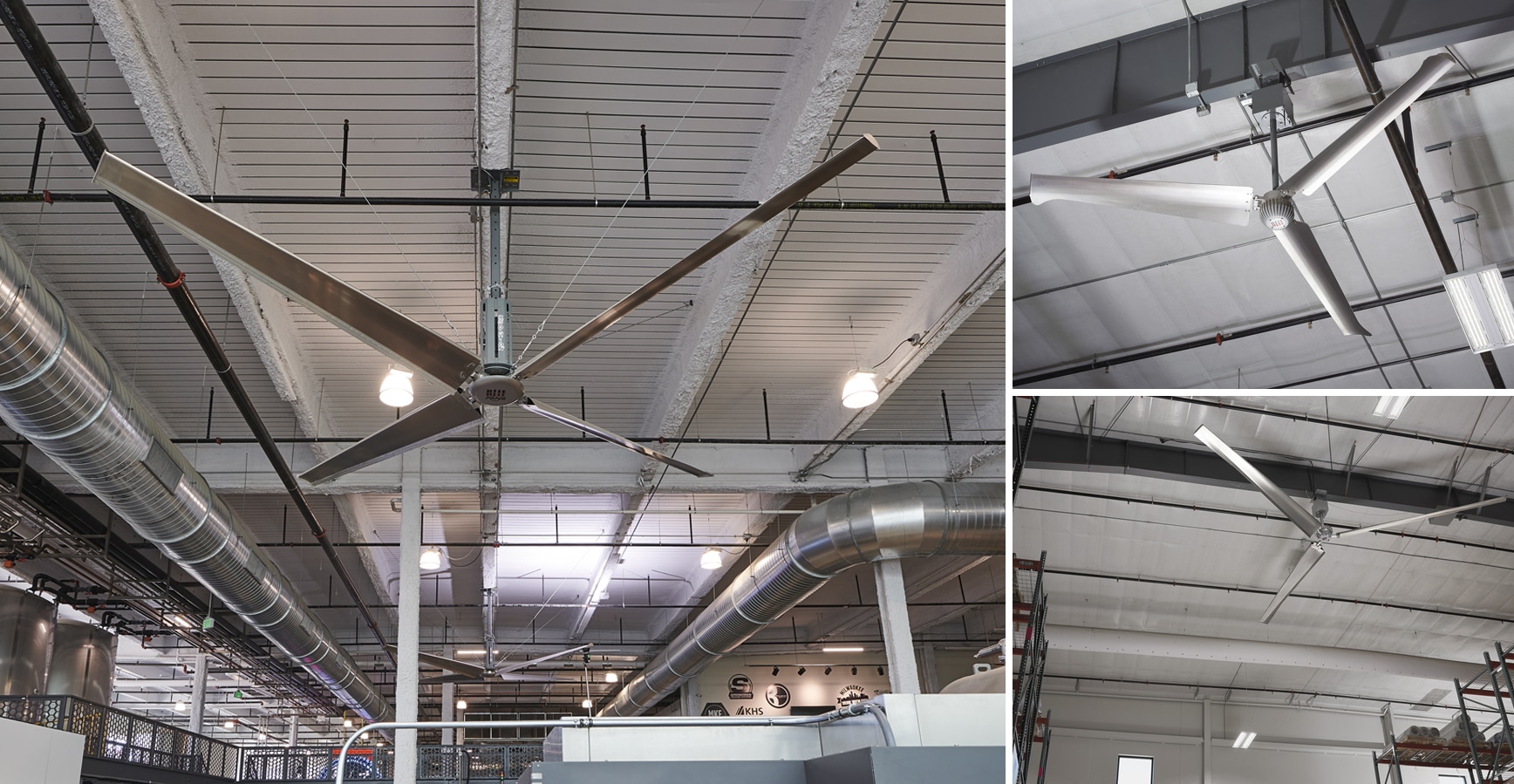
Which HVLS Fan is Right for You?
April 22, 2021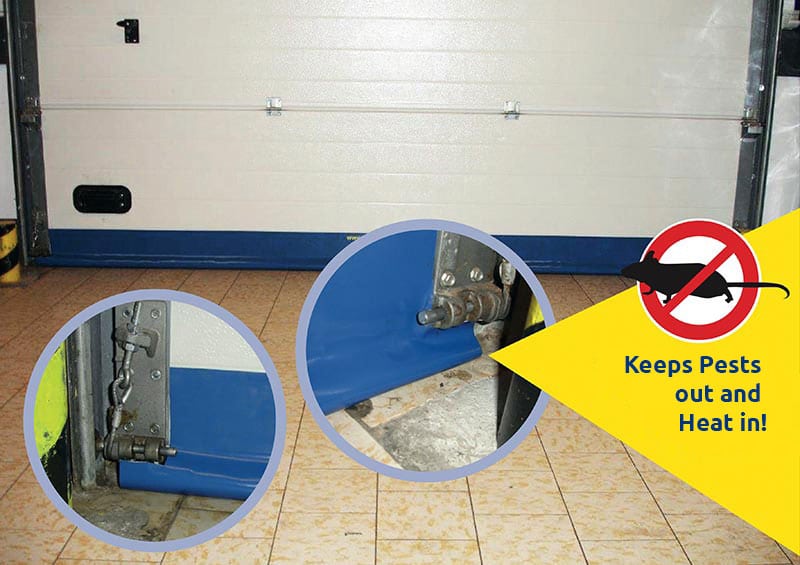
Seals for Docklevellers, Loading ramps & Doors
August 31, 20215 Tips to Build Safety into Your Loading Dock Design
The loading dock can be a place of high activity creating dangerous situations for employees all day, everyday. But with the right guidelines for loading dock design and proper equipment selection, the risks within this essential material handling zone can be drastically reduced.
Selecting the proper loading dock equipment for your specific application can help protect workers from potentially catastrophic dangers like a 4-foot fall out of an open dock door or a trailer separation accident during loading/unloading. Other equipment upgrades and new technology can bring advanced communication and safety into what once was a low-tech area.
When a loading dock is safer, workers tend to be more efficient. Safety and productivity really do go together. Here are five ways facility managers and safety managers can build a higher level of safety into their loading docks.
1. Design the Dock to Accommodate the Types of Trucks You’ll Need to Secure
Despite safety improvements in the past few decades, trailer separation accidents still occur all too frequently and often result in injury or even death for the workers involved. Some of the more common types of trailer separation accidents are:
- Early Departure – When a truck driver unexpectedly drives away from the loading dock while a forklift operator is entering, leaving or still inside the trailer.
- Trailer Creep – In some cases, the repeated jarring made by forklift movement in and out of a trailer can cause that trailer to edge away from the dock, ultimately causing the lift truck to fall into the gap.
- Landing Gear Collapse – The landing gear on a trailer may also give way as the weight of the trailer shifts during loading or unloading, causing the trailer to pitch forward or fall to the side.
- Trailer Pop-Up – A loaded forklift entering the rear of an empty trailer may cause it to move forward and drop, causing the nose of the trailer to suddenly rise.
- Trailer Upending – The reverse of trailer pop-up, this occurs when weight of the forklift sends the trailer’s nose down, causing the rear end to move up and away from the building.
These different trailer configurations create a new set of challenges for securing shipments and there is no longer a one-size-fits-all trailer restraint solution for most facilities. Selecting a trailer restraint that accommodates the types of trucks and trailers that a facility receives most, will increase safety in the long run. “Shadow-hook” restraints (which can handle intermodal chassis and a wider range of trailers) are an important step forward. However, in some cases, specialized stabilizing trailer restraint units may be needed to provide additional stability, while wheel-based restraints can provide a better fit for lift-gate trailers and tankers.
2. New Guidelines Help Prevent Forklift Accidents and Protect the Edge
Falls from loading dock openings are an all too common type of forklift accident. In fact, they account for 7% of all reported forklift accidents. Considering most of these falls are more than 4 feet, the damage to equipment, product and workers can be disastrous.
Many facility managers are probably aware of OSHA guide 1910.29, which states every wall opening from which there is a drop off of more than 4 feet shall be guarded by one of the following: rail, roller, picket fence, half door or equivalent barrier.
Recently, however, OSHA updated this old standard when it passed a regulation that specifically calls for a guard rail or equivalent barrier. Loading dock chains are no longer compliant with OSHA. There are fall-prevention barriers for the edge of the dock that can address this need. Selecting loading dock barriers – like the Dok-Guardian XL – will meet Walking-Working Surfaces regulations, which means they won’t rest or deflect below 39 inches off the ground. Additionally, all versions of the Dok-Guardian can stop up to 30,000 lbs.
3. Smooth Rides at the Dock Minimize “Dock Shock”
Forklifts are not the most comfortable vehicle to drive. With tires often made from solid rubber and no suspension system to speak of, they deliver an extremely stiff ride. Any bump or hump exacerbates this, by exerting pressure through the bottom of the forklift up a driver’s spine and into the shoulders and neck. Not surprisingly, more than one in five forklift drivers suffer from back and/or neck injuries.
Older dock levelers are one of the most common catalysts for this. Because of bumps and gaps, a forklift driver crossing over a leveler between warehouse and trailer may experience a jarring, whole body vibration known as “dock shock.” The first vibration point is typically located where the dock plate meets the warehouse floor, while a second occurs when the lift truck passes over the raised crown of the leveler’s front lip hinge.
By selecting smooth transition levelers, you can help alleviate this, reducing dock shock by up to 50%. Minimizing dock shock not only enhances employee well-being, it also reduces damage to dock equipment, forklifts and the products those forklifts carry.
4. Design a Safe, Central Point for Dock Operation Controls
Control panels for each piece of equipment at the loading dock can take up a lot of wall space and create confusion. Fortunately, technology exists to allow all loading dock equipment (like vehicle restraints, levelers and loading dock doors) to not only combine into one control panel, but to interlock a safe sequence of operation.
The Dok-Commander can be programmed with a green light interlock, which disables the use of the hydraulic leveler or overhead door until the vehicle restraint is safely engaged; an overhead door interlock, which requires overhead doors to be opened prior to leveler operation; or a stored leveler interlock, which ensures that the leveler is stored safely before the restraint can release the trailer. If an inexperienced worker presses the control box button for an individual system element in the wrong sequence, it won’t work. This control box helps ensure that no safety procedures will be skipped.
5. Design a Better Drive Approach at the Loading Dock
Of the approximately 60 loading dock-related deaths in the mid-2010s, 60% of them involved a worker on the drive approach being crushed by a backing trailer. On the inside of the dock, about 53% of forklift fatalities were the result of workers being struck or crushed by a forklift.
To address these dangers, there have been several new safety products introduced, such as the Rite-Vu Hazard and Light Communication System. In this system, a Dok-Lok incorporates an external motion sensor, which triggers an audible and visual alarm to alert workers outside the dock when a trailer begins backing in.
Motion-sensor based safety systems are also becoming popular inside the dock area. The Rite-Vu Hazard and Light Communication System shines a blue light (similar to forklift safety lights) when activity is detected inside a trailer, alerting workers that a forklift could back out at any moment.
The Best Loading Dock Design Guidelines Put Safety First
Safety doesn’t happen by accident. Building a loading dock that incorporates the right hardware and the right technology can make a huge difference in mitigating risk and increasing productivity. It’s important to assess and understand all the risks that could be present at the loading dock and see how equipment upgrades can take this material handling zone from mostly safe to very safe.
Consult a Loc8 representative for an assessment of your loading dock to see what opportunities exist for your specific application.
If you’d like to receive your personalized energy and cost savings assessment, please contact the experts at Loc8 (Loc8- 971 58 657 9823).


